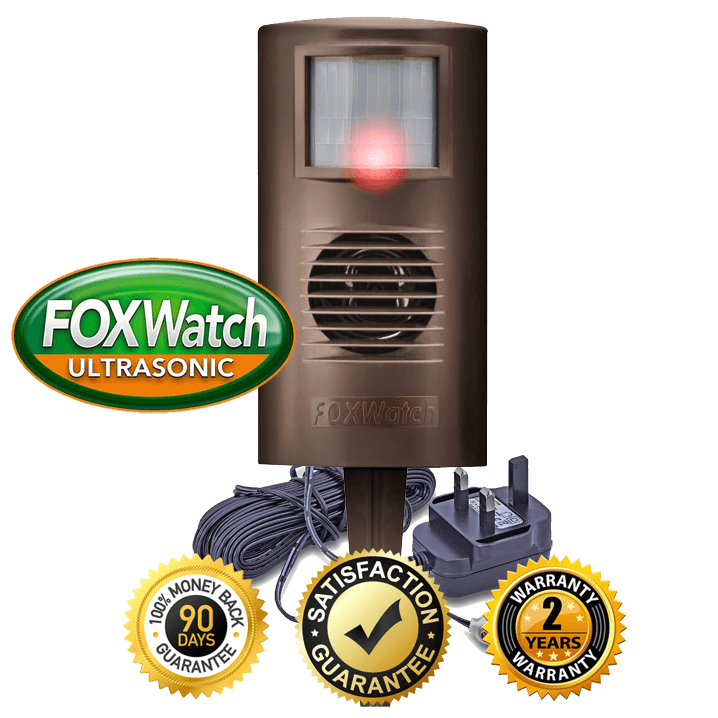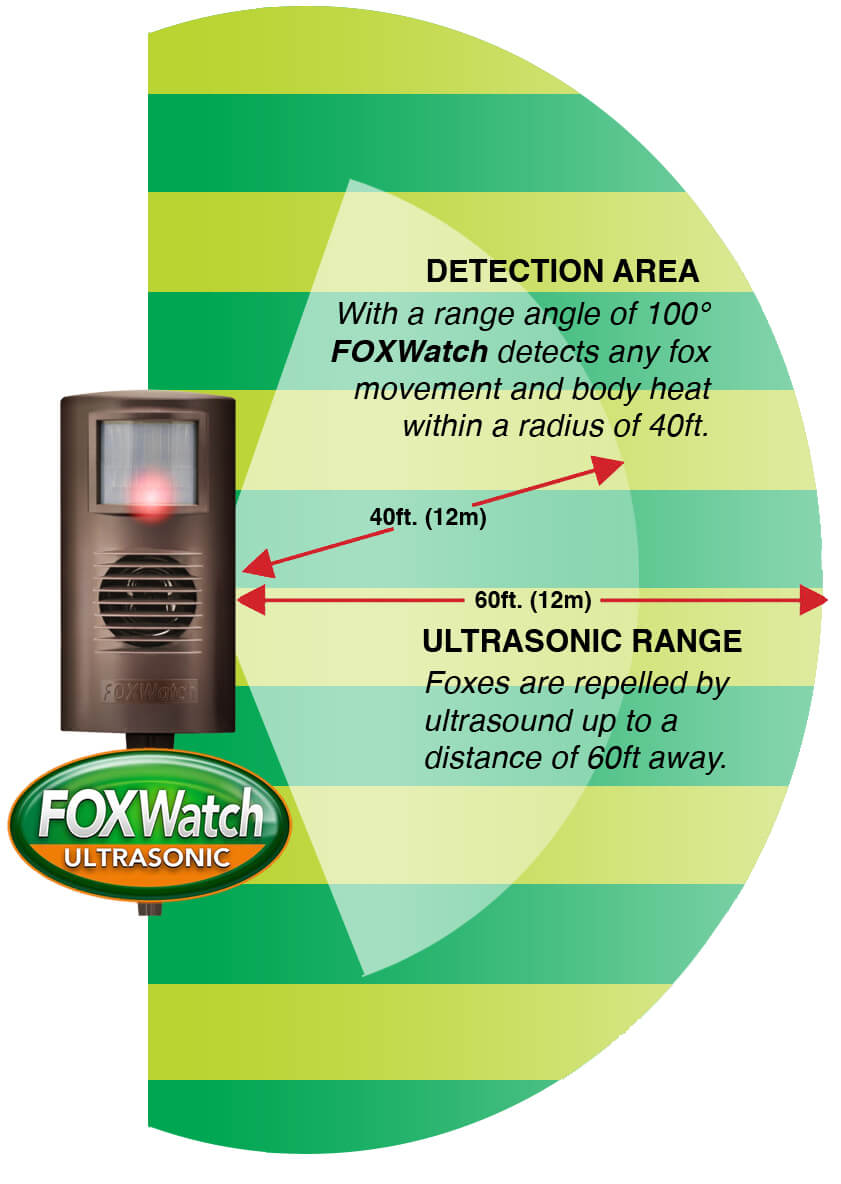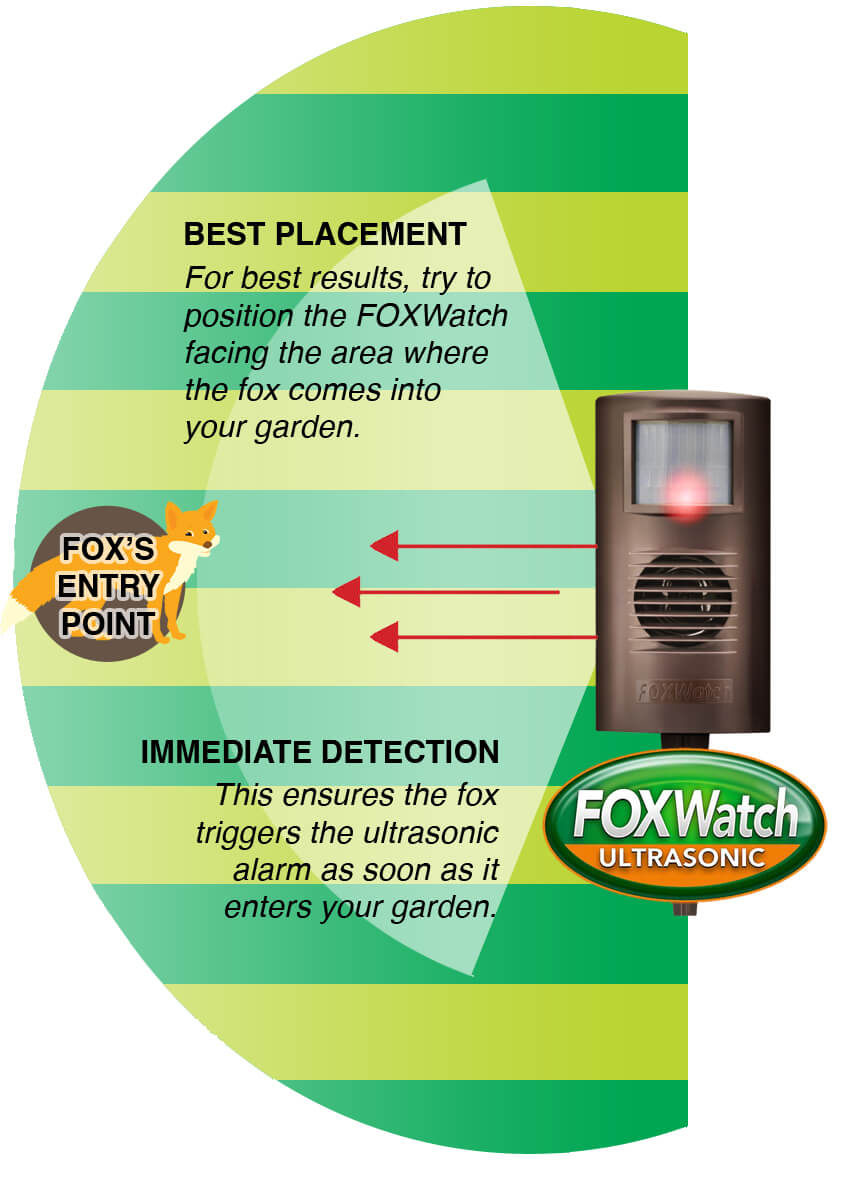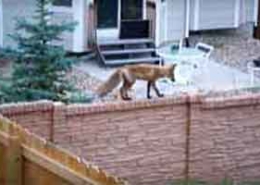Managing Fox Problems in CR0: A Guide for Croydon Residents
For those living in CR0, in the London Borough of Croydon, urban foxes are an unavoidable part of daily life. Whether it’s foxes digging up gardens, tearing into bin bags, or screaming in the middle of the night, many residents find themselves frustrated by their presence.
While foxes are a natural part of London’s ecosystem, their increasing numbers in CR0 mean that homeowners often struggle to keep them out of their gardens. If you’re dealing with fox problems, this guide will help you understand why foxes thrive in Croydon, why the council won’t help, and what you can do to keep foxes out of your garden for good.
Why This Article Was Written
This article was written after analysing over 11 years’ worth of postcodes from customers who purchased the FOXWatch Ultrasonic Fox Deterrent from this website. Among the Top 5 most common postcode districts for purchases was CR0, proving what many residents already suspect, Croydon has a pretty serious fox problem.
In fact, this website was founded as a direct result of my personal experiences with foxes while living in CR0. Like many Croydon residents, I witnessed recycling boxes tipped over and rubbish scattered across the street thanks to opportunistic foxes. Late-night walks home from East Croydon station were often made even more exciting by foxes staring me out and unleashing eerie screeches while casually trotting along the centre of the road.
So, if you’re struggling with foxes in your garden, you’re not alone, and this guide is here to help.
So, why does CR0 have such a large fox population? We’ll take a look below.
Why Does CR0 Have a Fox Problem?
‘The Cronx’ offers foxes everything they need to thrive: shelter, food, water, and easy access to urban and natural environments.
1. London’s Most Populous Borough
With a population of 170,300 residents (according to the 2021 Census), CR0 is the largest postcode district in London. It covers Croydon town centre, East and West Croydon, Addiscombe, New Addington, Shirley, and parts of Selsdon, making it one of the most densely populated and urbanised areas in the capital.
This high density of homes, gardens, and waste creates the perfect conditions for foxes to thrive. Unlike rural foxes that rely on hunting small animals, urban foxes have adapted to living alongside people, using residential areas as a source of food, shelter, and security.
Here’s why Croydon’s large population fuels its fox problem:
- Lots of gardens: With thousands of private gardens in CR0, foxes have plenty of places to hide, den, and raise cubs. Features like sheds, decking, and overgrown greenery create ideal fox nesting spots.
- High food waste: A larger population naturally means more rubbish, and foxes take full advantage of overflowing bins, discarded food, and untidy recycling boxes. Croydon’s mix of terraced streets, high-rise flats, and suburban homes ensures a constant supply of easy meals for scavenging foxes.
- Easy navigation: CR0 is well-connected by roads, train lines, and tram routes, which unintentionally create wildlife corridors. Foxes use railway embankments, alleyways, and parks to travel across the borough, allowing them to spread into new residential areas with ease.
- People feeding foxes: In densely populated urban areas, there’s always a percentage of people who deliberately feed foxes, either through food scraps or direct handouts. This behaviour encourages foxes to return and makes them bolder around homes and people.
All of this means that CR0 isn’t just a place where foxes survive, it’s a place where they thrive. Foxes in Croydon don’t need to hunt like their rural counterparts; instead, they live off human waste, shelter in human spaces, and travel through human infrastructure.
For CR0 residents struggling with fox problems, understanding why foxes are so common is the first step toward taking back control of your garden.
2. Plenty of Green Spaces
While Croydon is built-up, it is also surrounded by numerous parks, woodlands, and nature reserves, providing foxes with shelter and safe spaces to breed.
Some of the key green spaces attracting foxes in and around CR0 include:
- Lloyd Park: Open fields and wooded areas make this a perfect fox habitat.
- Addington Hills: A mix of woodland and scrubland provides plenty of places for foxes to den.
- South Norwood Country Park: A vast nature reserve with lakes, grasslands, and wild areas where foxes can hunt.
- Shirley Heath: A quieter, wilder space that gives foxes a perfect base before venturing into nearby gardens.
- Park Hill Recreation Ground: A smaller but well-visited park, often used as a route for foxes moving between different areas.
- Duppas Hill: One of Croydon’s oldest public open spaces, offering grassy slopes and tree cover that provide shelter for foxes. Its proximity to residential areas makes it another convenient base for foxes.
- Wandle Park: With its riverside location and tree cover, foxes find plenty of shelter here before roaming the nearby streets.
With safe, accessible green spaces aplenty in CR0, it’s no wonder foxes thrive in the area and frequently make their way into Croydonia’s residential streets and gardens.
Food Waste in CR0: Easy Pickings for Foxes
Croydon’s foxes don’t just rely on nature to survive, they thrive on food waste left behind by humans. CR0 has several major food hubs where discarded food attracts both foxes and rats, creating a continuous food supply for urban wildlife. These areas provide foxes with easy scavenging opportunities, making them a key reason why foxes remain so active in Croydon.
Some key areas where food waste is high include:
- Croydon Town Centre – The restaurants, takeaways, and food stalls around North End, George Street and the BoxPark provide foxes with endless food scraps.
- London Road, West Croydon – A long stretch filled with eateries, fast-food chains, and small restaurants, meaning plenty of waste.
- High Street, South End – An area packed with pubs, restaurants, and coffee shops, making it a hotspot for food waste.
- Addiscombe High Street – Smaller but still home to cafés and takeaways, providing another food source for foxes.
Where there’s food in urban areas, there are almost certainly going to be foxes. These areas act as fox feeding grounds, encouraging them to stay in the vicinity rather than moving on elsewhere.
Croydon Council’s Stance on Fox Problems
“The Council does not offer any kind of service regarding fox issues…“
Croydon Council
No council assistance on fox issues
If you’re struggling with foxes in your garden and were hoping Croydon Council might step in to help, think again. The council does not offer any services to deal with fox problems, and their official position is that managing foxes is the responsibility of individual residents.
Instead of addressing public concerns, they simply direct residents to external organisations like The Fox Project, a small charity that does excellent work with limited resources but should not be expected to pick up the slack for an entire London borough, let alone the largest one.
What the council does record
While Croydon Council does log reports of dead foxes, they do not track complaints about live foxes causing problems for residents.
- Over 350 dead foxes were reported in CR0 alone between December 2023 and December 2024.
- No official data exists on fox complaints from residents, meaning the scale of the problem is unknown.
- FOI requests to other London boroughs reveal that the most common fox-related complaint is neighbours feeding foxes, something that is almost certainly happening in Croydon, but the council simply doesn’t record it.
Why Croydon Council doesn’t help
Croydon Council’s lack of involvement in fox control isn’t surprising, given its well-documented financial problems in recent years. The council declared effective bankruptcy in 2020 and again in 2022 (and requested a government bailout in 2025), leaving them unable to provide many essential services, let alone wildlife management.
If you want to understand more about why Croydon Council is in such a dire financial situation, the YouTube channel CronxWatch has done some excellent local journalism on the issue.
Ultimately, this means if you have a fox problem in your garden, you are entirely responsible for dealing with it. The council won’t help, so residents must take their own steps to secure waste, discourage feeding, and use effective deterrents like the FOXWatch Ultrasonic Device to keep foxes out of their gardens.
What Croydon Residents Can Do to Keep Foxes Out
Because Croydon Council won’t step in, the best way to protect your garden from foxes is to take action yourself. Here’s what you can do:
1. Discourage Feeding
Although Croydon Council doesn’t log fox-related complaints, FOI requests to other London boroughs show that neighbours feeding foxes is the most common complaint residents make. While it might seem harmless, feeding foxes only encourages them to return and makes them bolder around humans.
Foxes don’t distinguish between a friendly neighbour who feeds them and another who wants them gone. They simply associate the entire area with food.
If you have a neighbour who regularly feeds foxes, a polite, diplomatic chat about the problems it’s causing in your garden might help. It’s not an easy conversation, but if foxes are becoming a nuisance, it’s worth addressing.
You can also reduce food temptations by avoiding feeding pets outdoors and using hanging bird feeders instead of throwing food scraps onto the lawn.
2. Secure Your Waste
It might seem obvious, but foxes are opportunistic scavengers, and Croydon’s high population density means there’s plenty of waste for them to rummage through.
To prevent foxes tearing into bin bags:
- Use a wheelie bin with a tightly closed lid.
- Avoid overflowing recycling boxes as they’re easy targets for foxes.
- Rinse out food packaging (milk cartons, yogurt pots, meat trays) to reduce strong smells that attract foxes.
Many Croydon homes still rely on open recycling boxes, which are easy pickings for foxes. If your box is regularly raided, consider requesting an extra container so the lid can be properly secured.
3. Keep Your Garden Tidy
Foxes are drawn to gardens that offer plenty of cover, so long grass, overgrown shrubs, and general clutter can make your outdoor space a perfect hideout. If your garden could do with a trim, cut, or clear-out, that’s a great place to start in discouraging foxes from hanging around.
Even if you keep on top of garden maintenance, there are still places that might be providing shelter without you realising. Spaces under sheds, decking, and garden offices are particularly attractive to foxes, as are tucked-away areas behind garages or compost heaps. Blocking access to these areas and saturating the ground with water can make them less desirable for foxes to settle in.
Another thing to consider is what’s being left outside overnight. Dog chews, children’s toys, gardening gloves, and even shoes can attract foxes looking for something to play with or bury. Tidying these away in the evening removes another temptation and makes your garden less of an inviting playground for young foxes.
- Further reading: 10 Reasons Foxes Come into Your Garden (And What To Do About It)
4. Use a Humane Deterrent
While there are changes you can make in your garden to improve the situation, using a dedicated fox repellent will help to reduce the problems that the fox has been causing. The most popular humane fox repellents are listed below with links to further information.
- Scoot Fox Repellent – A clever powder that is diluted with water and sprayed around your garden, Scoot disguises the fox’s own scent when it tries to scent-mark. Foxes scent-mark to establish control of their territory, but if they return to the area and can’t smell their own scent, they get worried a rival is trying to take over the area, causing them to retreat elsewhere.
- Prickle Strips – If digging in flowerbeds or plant pots is a problem, these rows of gridded plastic spikes are very useful. They’re not sharp enough to cause the fox harm, but are uncomfortable for the foxes to put their weight on, stopping them from getting to the soil underneath.
- Citronella-Scented Deterrent – For problem pooing in particular areas of your garden, you can try a scented citronella spray that puts off foxes from returning to that spot. Patios, flowerbeds, driveways, synthetic grass are common targets, so using a scented deterrent may help keep the fox away.
- Ultrasonic Deterrent – A low-maintenance device that lets out high-pitched noises when the fox gets close to it. The noise is annoying to a fox (much like a smoke alarm or car alarm to humans) making it want to not spend time in the area. Ultrasonic devices effectively train the foxes and change their behaviour so the effect becomes better over time. Avoid cheap, solar powered devices as they simply won’t emit a powerful enough noise to have an impact. More details on the British-made FOXWatch Ultrasonic Deterrent are below.
The FOXWatch Ultrasonic Fox Deterrent
For Croydon residents seeking an effective solution to persistent fox disturbances, the FOXWatch Ultrasonic Fox Deterrent offers an effective, humane method to reclaim your garden.
How FOXWatch Works
Using an innovative infrared motion sensor, FOXWatch detects the movement of foxes within its range. Upon detection, it emits short bursts of high-pitched noise, inaudible to humans but highly irritating to foxes. This unpleasant experience conditions foxes to associate your garden with discomfort, leading them to avoid the area over time.
Why FOXWatch is Effective
- It emits a high-frequency sound that is unpleasant to foxes but harmless to humans and pets.
- Foxes quickly learn to avoid the area where the deterrent is placed.
- It provides a long-term, non-intrusive solution that allows you to enjoy your garden without unwanted fox visitors.
Why FOXWatch is the Best Choice for Croydon Residents
- 24/7 Protection: FOXWatch operates continuously, providing round-the-clock defence against fox intrusions. As foxes learn to steer clear, you’ll notice a significant decrease in issues like fouling, digging, and plant damage.
- Pet and Wildlife Safe: Unlike chemical repellents, FOXWatch is safe for cats, dogs, small domestic pets and other wildlife, ensuring a harmonious garden environment.
- Cost-Effective and Low Maintenance: Once installed, FOXWatch requires minimal upkeep. There’s no need for repeated applications or replacements, making it a cost-effective long-term solution.
- Built for British Weather: The FOXWatch is manufactured in the UK, designed to cope with the wet British climate. Being able to buy British is an increasingly important consideration for many people purchasing for their homes and gardens.
- Popular Choice in CR0, CR2, CR5 & CR8: Many local residents already use FOXWatch to successfully keep foxes away, with numerous devices already in place across the Borough of Croydon.
Easy Installation
Setting up FOXWatch is quick and simple:
- Position the device ideally facing the point at which the fox enters your garden, or the area where it has been causing the most problems.
- Connect it to the included 12 Volt Mains Adapter or insert a 9 Volt battery.
- Switch it on, and it begins working immediately. In less than five minutes, your garden will be equipped with continuous fox protection.
Now when foxes enter your garden, they will trigger the high-pitched ultrasonic noises and will quickly be trained to reduce the frequency and duration of their visits. You’ll notice the improvement as time goes on, so make sure to be patient.
FOXWatch Devices Already in Croydon
With Croydon’s high fox population, a deterrent like FOXWatch is an essential investment for homeowners looking to keep their outdoor spaces fox-free.
Since we began recording data in 2013, CR0 has been one of the top postcodes for FOXWatch usage, with many devices in place across the borough. South Croydon (CR2), Purley (CR8), and Coulsdon (CR5) are also fox hotspots, where residents are actively using FOXWatch to protect their gardens. Now it’s your turn!
Order today and join the many local homeowners taking back their outdoor spaces.
FOXWatch FAQs
Is the FOXWatch safe for use with dogs?
Yes, the FOXWatch is absolutely fine to use with dogs.
A large proportion of people who buy the FOXWatch are actually dog owners worried about the risk of germs from fox poo, their dogs getting agitated when seeing a fox in the garden or the fear of attack, especially on smaller dogs.
After the FoxWatch has been installed and there is a reduction of fox visits to the garden, dog owners tend to feel much more relaxed about letting their dogs into the garden without worrying about germs, agitation or attack.
EXTRA TIP – Dog pee is a great supplementary fox deterrent, so feel free to encourage your dog to pee in areas of your garden where you’ve seen the fox, especially at the point they get in. This introduces a ‘rival scent’ to your garden and, if done on a regular basis, works really well in combination with the noise of the FOXWatch.
Is the FOXWatch safe for use with cats?
Yes, the FOXWatch is absolutely fine for use with cats.
In fact, the scent of foxes in the garden may be causing your cat quite a lot of stress, so the sooner you take steps to keep the fox away, the sooner your cat can relax again.
It’s possible the fox could be making your cat fearful of leaving your house. Some common symptoms include a reluctance to use the cat flap, going to the toilet in the house or going out into the garden nervously and keeping low to the ground, constantly sniffing the floor. It’s also not unheard of for foxes to enter via the cat flap, raid the food bowl and terrify the resident cat in the process!
Installing a FOXWatch will help to reduce the visits of the fox to your garden, in turn reducing the stress levels in your cat and giving it the confidence to use the cat flap and enjoy the garden again.
Will the FOXWatch scare birds from my garden?
No, the FOXWatch doesn’t have any effect on birds and won’t discourage them from coming into your garden.
Foxes have been described as a ‘catlike canine’ for many reasons, including their ability to stalk and catch birds in a similar way to cats.
A reduction in fox visits to your garden may well see an increase in birds visiting as well as spending longer each visit due to decreased fear of a predator (subject to local cats of course!).
EXTRA TIP – If you enjoy feeding the birds, try and avoid throwing kitchen scraps out onto your lawn or patio. The smell of the food will attract foxes and possibly mice and rats as well. Try and stick to birdseed installed in hanging bird feeders or high up out of reach of foxes (and cats). This will be safer for the birds and gives less of a reason for foxes to be tempted into your garden.
Is the FOXWatch safe for use with rabbits/chickens/guinea pigs etc...?
Yes, the FOXWatch is completely fine to use with these small animals and should be considered a must-have deterrent to help protect them.
These small animals are unfortunately very attractive to foxes, so you need to do whatever you can to keep them safe. A FoxWatch can provide an important part of your arsenal to protect your small pets, as would electric fencing or mesh, a quality scented deterrent and using strong and secure cages or pens.
When you have such tempting ‘fox prey’ in your garden, the greater variety of deterrent methods you use, the better.
How do foxes react to the FOXWatch?
When you first install the FOXWatch, foxes are likely to show a great deal of interest in the device. A new object making irritating high-pitched sounds has suddenly appeared in their territory, so they are immediately going to be concerned. Their initial reaction will be to try and work out what this thing is and if they can overpower it.
Foxes staring, sniffing, attacking, pooing or spraying urine on the FOXWatch are very common reactions the first few times they encounter it, so don’t be surprised or worried if you initially see this happening in your garden. These are positive signs and show that the foxes are very concerned about the FOXWatch and are trying to intimidate and establish dominance over it.
It’s important that you leave the FOXWatch in place for at least 30 days (ideally longer) to allow it the time to teach the foxes that this irritation is permanent. It’s through their repeated encounters with the FOXWatch that they learn to associate your garden with the annoying ultrasonic noises. This causes their visits to your garden to get fewer and farther between, with each visit shortening in duration as they find somewhere else to go.
How long does the FOXWatch take to work?
We advise you to use the FOXWatch for at least 30 days to allow for the full deterrent effect to be achieved.
Training a fox to associate your garden with the irritating high-pitched noises is a gradual process, resulting in the fox spending less and less time in your garden as time goes on.
As you’ve already discovered, foxes are very persistent animals so it’s important that you remain patient and allow enough time for this process to take place.
We like to use the phrase ‘a marathon, not a sprint’ in regards to successful fox deterrence. Start with this mindset and you’ll be much happier with your progress!
How many FOXWatch devices do I need?
There’s no right or wrong answer regarding how many FOXWatch devices you should install. This is entirely dependent on your individual situation, garden set up and how severe your fox problem is.
Some questions to ask yourself to help you decide are:
- Do you have fox problems in one area or in multiple areas (e.g. your front/back garden/driveway/down the side etc..)?
- Do you have one fox or multiple foxes visiting?
- Do the foxes enter and exit your garden in one place or in different places?
- Is your garden a regular shape or irregularly shaped (e.g with corners, slopes or tiers/levels)?
Some people only need one FOXWatch to reduce their fox problems, while others require numerous devices to protect all affected areas. You know your garden and the nature of your fox problem best, so ask yourself the questions above and think about what you might need.
If in doubt, start with one FOXWatch and then add more devices later if you feel you need them. We have many people who come back for more once they see the device having a positive impact.
It’s always better to take some sort of decisive action rather than over-thinking it and doing nothing.
What distance does the FOXWatch cover?
The FOXWatch can detect up to 12m (40ft) and covers an unobstructed area of up to 125sqm (1350 sq ft).
Is the FOXWatch weatherproof?
Yes, the FOXWatch is made in Britain and specifically designed to cope with the notoriously wet and windy British climate, as well as the wild temperature fluctuations that it will naturally experience when sat out in your garden
The internal components are made from the highest quality materials and are securely sealed in a waterproof resin to provide the longest possible operating life.
Many cheaper alternatives to the FOXWatch are not made with the wet British weather in mind and are mass-produced (often in China) with much lower quality internal components – naturally shortening the life expectancy of those units.
Of course, in the event of freak weather conditions, such as monsoon-style rain or heavy snowfall, bring the FOXWatch in for a few hours to dry out before setting it to work again. Like anything, the more you look after it, the longer it will last and continue to deter foxes.
Additionally, every FOXWatch comes with a comprehensive 2-year manufacturer’s warranty covering any applicable repairs or replacements required to the unit during that period.
Why do you recommend using the mains adapter rather than a battery?
Because the mains adapter provides 12 Volts into the FOXWatch, rather than 9 Volts from a battery – that’s 33% more power. More power means a louder, more effective noise to deter the fox. Plus you don’t have to worry about replacing a flat battery.
The mains adapter comes with a 10m (32ft) cable. We also stock a 10m extension cable which allows you to install your FOXWatch up to 20m (64ft) away from a plug socket.
Although we recommend using the adapter, we understand it’s not possible for everyone and using a 9V battery in the FOXWatch still provides a very effective fox deterrent. Just make sure it’s a Duracell Alkaline 9 Volt Battery so that you get maximum power and reliability from your FOXWatch.
Many cheaper alternatives to the FOXWatch do not contain a mains adapter and often use rechargeable or solar powered batteries to power the units. These kind of batteries degrade fairly quickly and are unlikely to contain enough charge to provide the powerful noise required to keep foxes out of your garden over the long term.
How long does a battery last?
A 9 Volt Duracell battery will normally last 2 – 3 months. The lights on the FOXWatch will flash to warn you when the battery is running low.
We recommend you use a Duracell alkaline battery rather than cheap brands or rechargeables, as these can quickly degrade and won’t provide enough power to the unit, which in turn means the noise emitted from the unit is less powerful.
If you allow a battery to go completely flat and don’t replace it, the deterrent effect of the FOXWatch will stop.
What’s the big deal about the FOXWatch being made in the UK?
Whilst it’s absolutely important to promote British manufacture, the answer is actually practical rather than political.
The FOXWatch is the only ultrasonic fox deterrent fully designed and manufactured in the UK and each unit is hand-built and quality-control tested before it leaves the plant in Stevenage.
It’s undergone rigorous and extensive trials with British urban foxes, in British gardens and is specifically designed to withstand the British weather.
The cheaper alternatives are generally manufactured in China, which isn’t a problem in itself, but mostly means they have not been tested on the UK’s urban foxes, and are built with lower quality components not capable of lasting as long in our damp and wet climate.
The manufacturer of the FOXWatch provides a comprehensive 2 year warranty and even an additional repair service once the warranty has expired. They have a long history of manufacturing high quality animal deterrents and are very approachable and welcoming of questions or requests for assistance.
Will the FOXWatch protect a large garden/school field/bowling green/tennis court/sports pitch?
The FOXWatch has a massive unobstructed protection area of 125sqm (1350sqft) which is far greater than most other competitors’ coverage.
This makes the FOXWatch suitable for a huge range of environments including small gardens, large gardens, open gardens, playing fields, farms, schools, bowling greens, grass tennis courts and sports pitches.
Many people who have particularly large spaces requiring protection from foxes often purchase multiple FOXWatch units, either placing them in rows at with certain distances between one another or placing them back to back for greater circular protection.
What is the warranty and the guarantee?
All of our FOXWatch units come with a 2 year manufacturer’s warranty which covers repair or replacement in the unlikely event something goes wrong with a unit. We also provide a 90 day money back guarantee. Any returns should be made using the original packaging and please contact us first.
Conclusion: The Council Won’t Act But You Can
Foxes are a permanent part of CR0, and Croydon Council has made it clear they can’t/won’t take action. If you want to reduce fox activity in your garden, the responsibility is entirely on you as a homeowner.
The good news is that there are effective, humane ways to keep foxes out, by securing food waste, discouraging feeding, and using deterrents like the FOXWatch.
Order the FOXWatch Ultrasonic Fox Deterrent today for just £69.95 . It comes with a 12 Volt mains adapter, full operating instructions, 90-day moneyback guarantee, 2-year manufacturer’s warranty and free UK delivery.











 Photo credit: Concept Research
Photo credit: Concept Research Photo credit: Adam Lowly | Pexels.com
Photo credit: Adam Lowly | Pexels.com

 Photo credit: John Ondreasz - Pixabay
Photo credit: John Ondreasz - Pixabay



